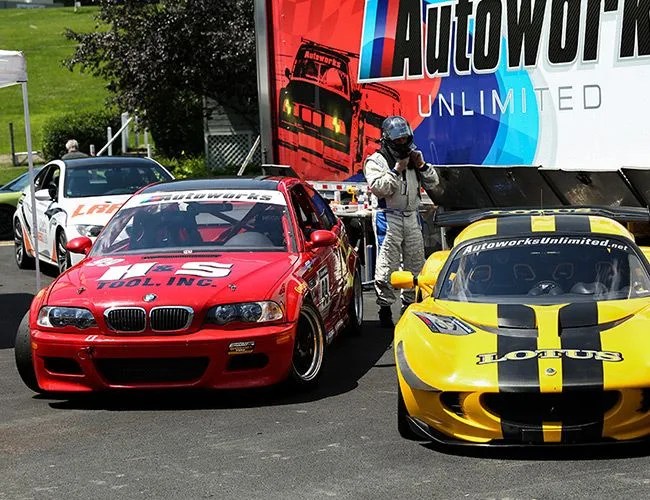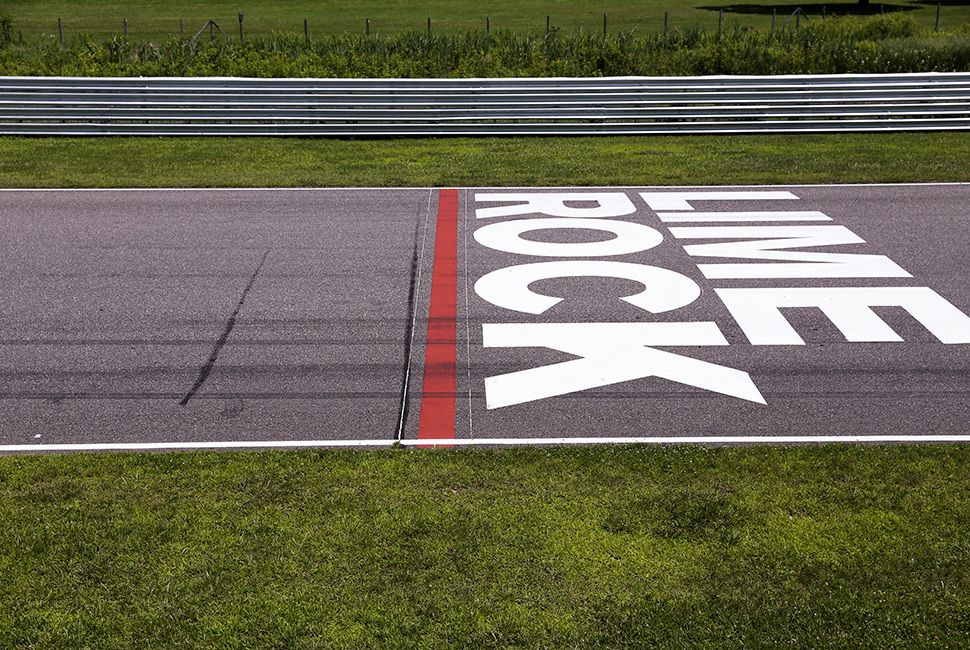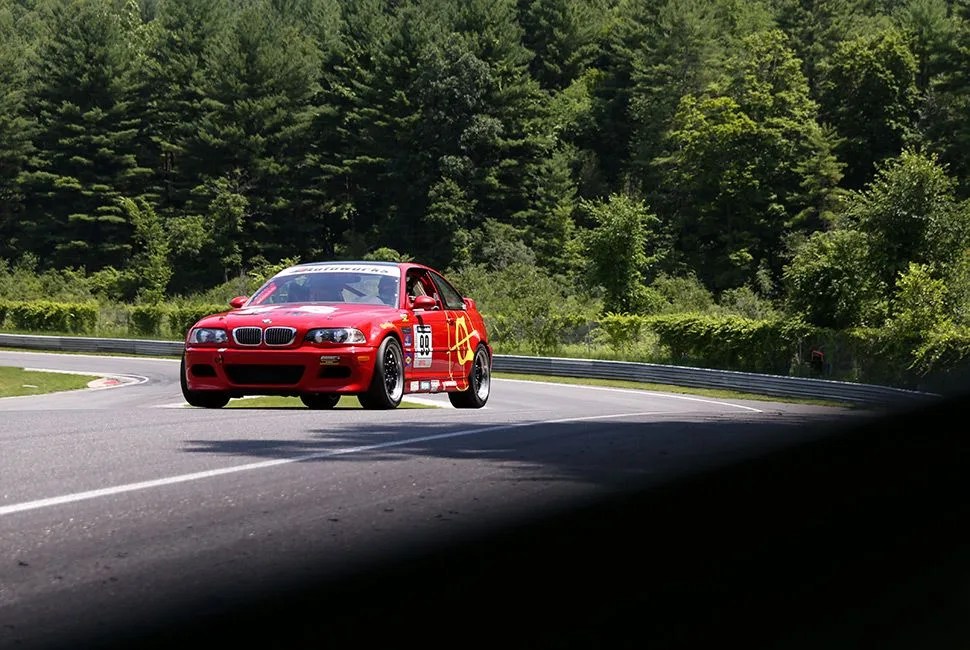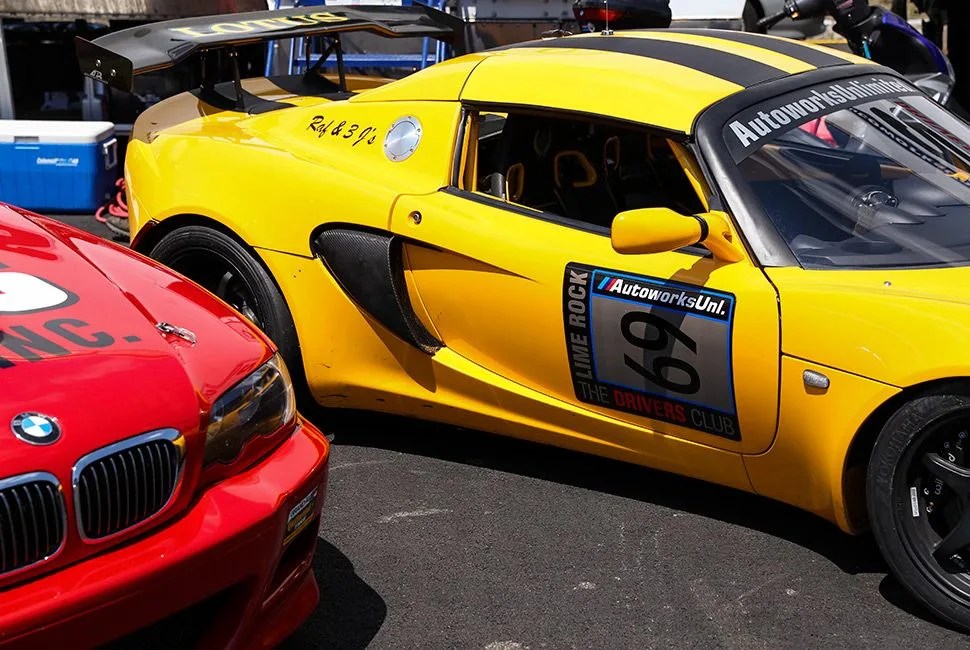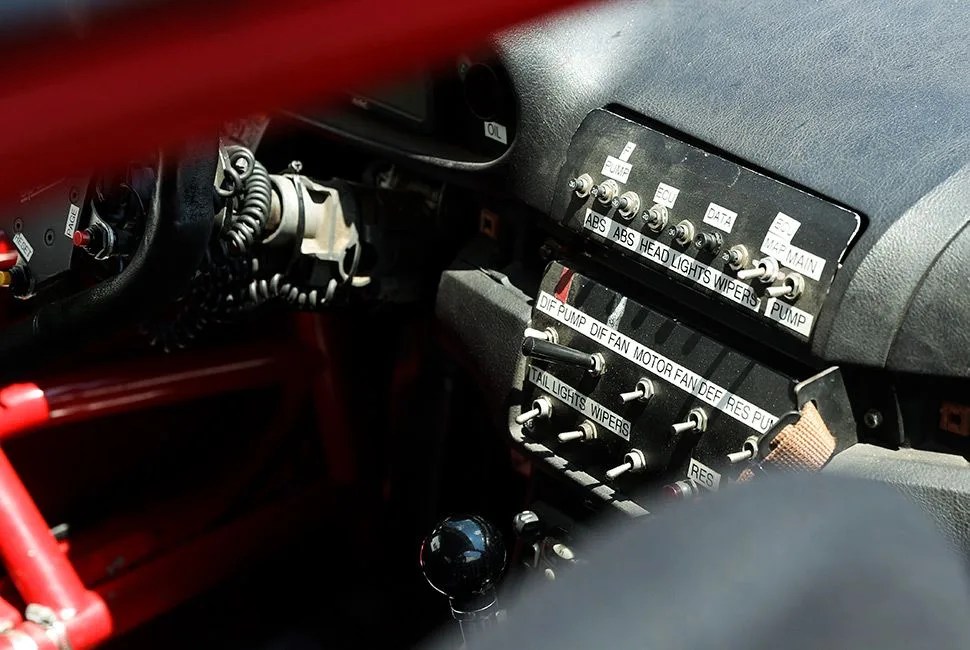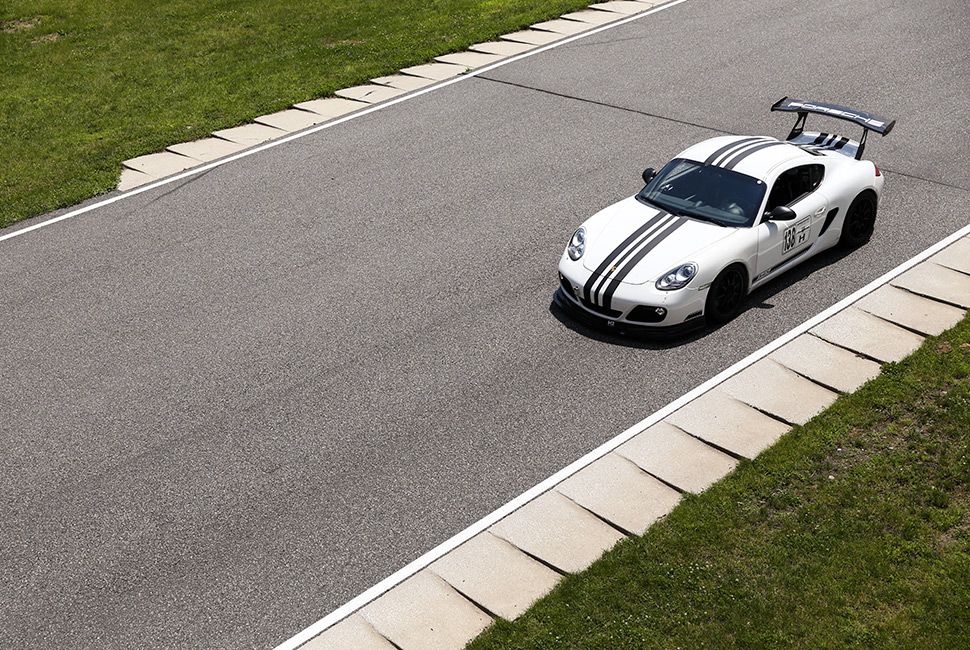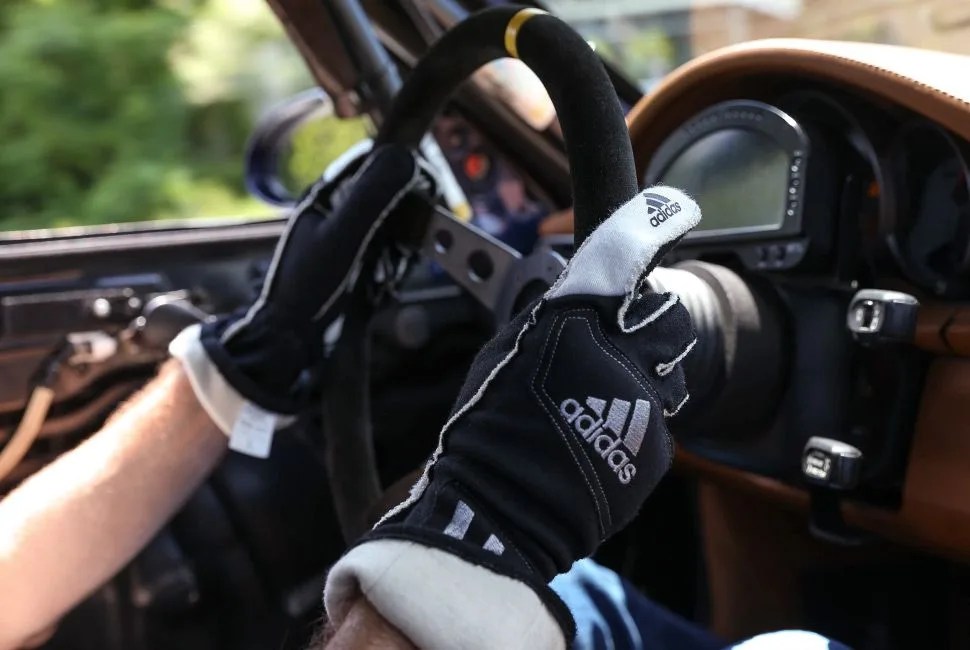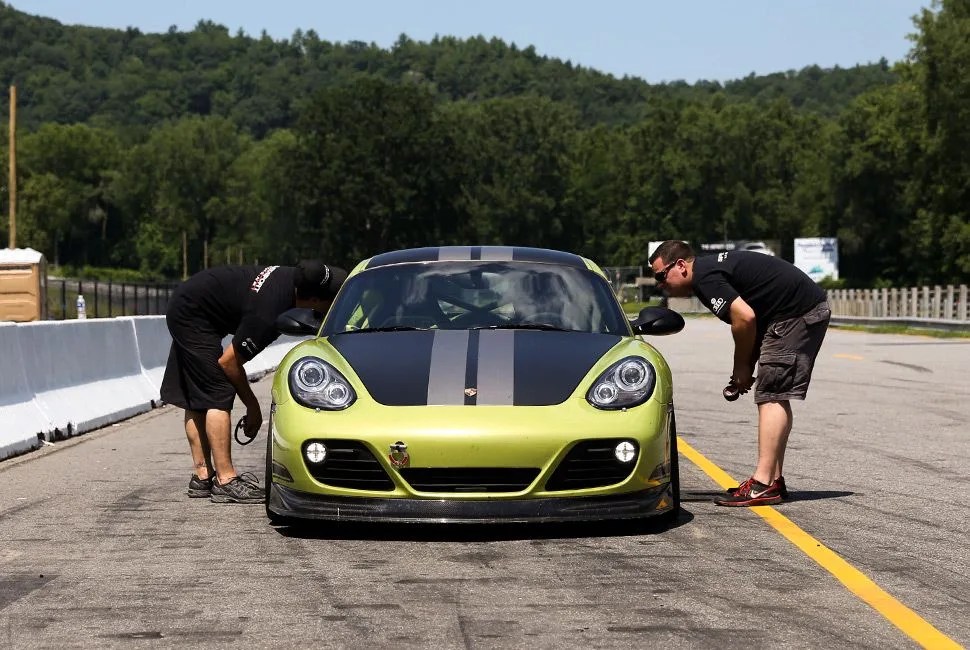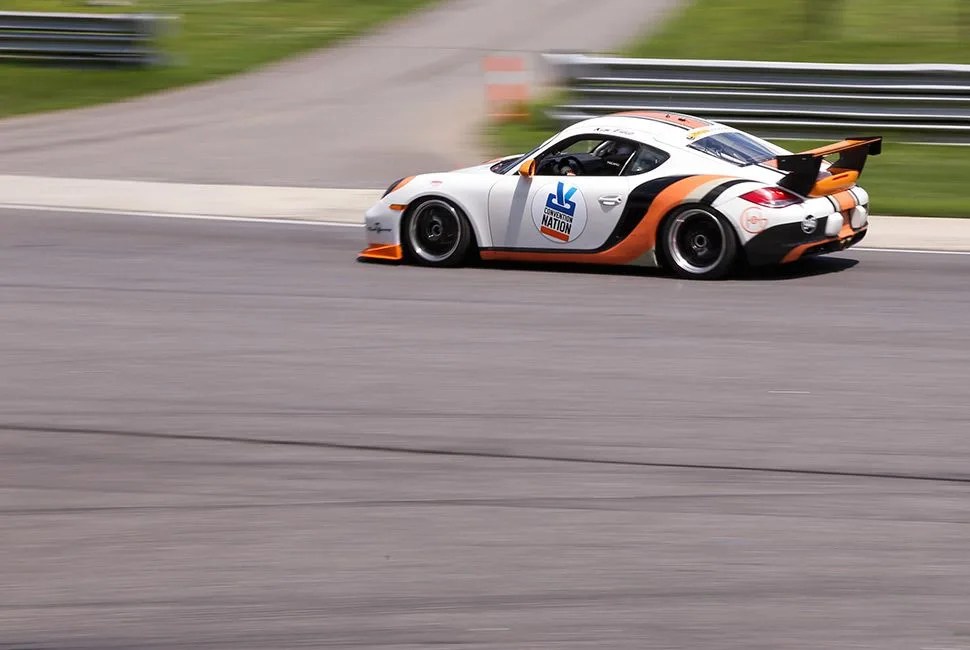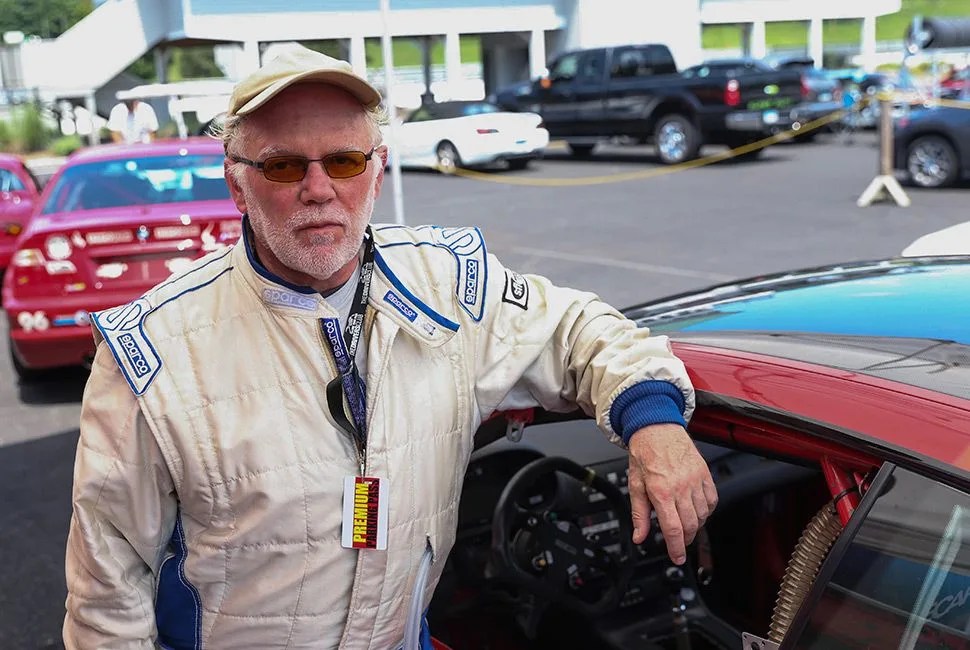14 photos
Both Frank Veteran’s hips have been replaced and he needs back surgery. His running around is a bit more limited these days — he used to ride motorcycles, but his body does better now with four wheels connecting him to the tarmac. About a decade ago, he bought a BMW M3 and did the Driver’s Program, then did M School, then did Skip Barber. Then he bought a former IMSA Grand Sport BMW M3 race car and joined the Lime Rock Drivers Club. Driving fast, he says, is the kind of activity that keeps his mind sharp, even as his body gradually slows him down. The Drivers Club — which starts at a $16,500 initiation fee, costs $3,630+ a year, and allows drivers to get up to 60 days of track time annually — is an investment in staying sharp. For Veteran, the benefits outweigh the costs.
Veteran’s in a blue-and-white Sparco racing suit that fits loose over his heavyset frame. In the car, he’s fully connected — helmet, brace, forced air tube, shoes, gloves. Out of the car, over lunch, he still wears the suit and the shoes. There’s not much down time on Lime Rock Drivers Club track days; an hour on track alternates with an hour off, and the drivers — about 15 here today (there are 75 total in the club) — are milling about in the members-only Clubhouse like professional racers waiting for qualifying to begin. The vibe is congenial and casual. Chatter revolves around how lap times are trending, who’s going north or south in their driving, what corners are giving people trouble.
Veteran and I talk about such things, briefly. His lap tracker isn’t working today, and he has no good sense of what’s going down out there on the hot laps. So, instead, we explore the depths of why one drives these kinds of cars on these kinds of tracks. We explore why someone like Veteran — a local in the area and retired plastic surgeon — joins a country club-like track experience like the Lime Rock Drivers Club, at a not-insubstantial fee.
Mostly, it’s mental, he says. Driving, for most of us laypeople, centers around getting from one point to the next safely and comfortably. On the track, the only thought is how quickly one can make a lap. And to do that, it takes every millisecond of acute attention paid to pressing the pedals, shifting the gears and steering the wheel. It’s all-consuming. Those minutes of hyper concentration are addicting — it’s the same draw one feels from the rest of the extreme sports — whether it be racing airplanes, heli-skiing or mountain biking. The thrill of checking out of the chatter in the mind and getting into the zone. Veteran loves that. It keeps him sharp.
The thrill of checking out of the chatter in the mind and getting into the zone. Veteran loves that. It keeps him sharp.
To demonstrate how driving keeps the mind on a razor’s edge, I hop in Steve Abrams’s blue Porsche 911, which he casually refers to as “The 120 mph Cupcake” (Abrams owns Magnolia Bakery and the bakery’s branding is plastered on the doors, hood and roof of the car). Most of the cars on the track today are Porsches, and most have been carefully modified to align better to racing specs rather than road specs. Abrams says he bought the 911 as a mid-life crisis — he wanted the eye-catching sports car to cruise around with — and then slowly stripped it down to its bare elements and made it ready for the track. It now has a full roll cage, two four-point harness bucket seats, a racing steering wheel and digital instrument cluster, a handful of switches in the dash, and not much else. This Porsche’s no longer about frills. It’s about speed.
